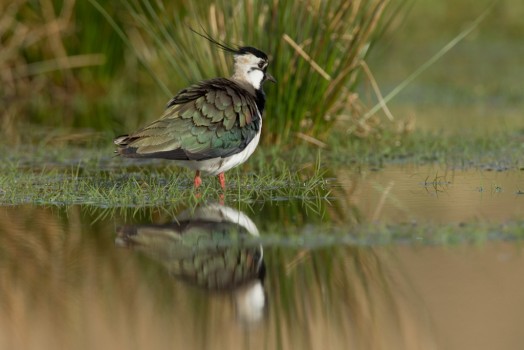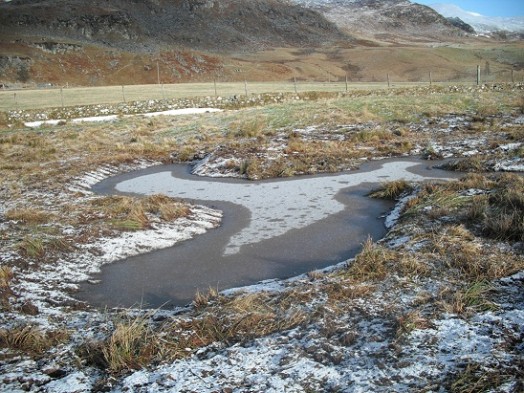Supporting guidance for Creation of Wader Scrapes
This is an old version of the page
This is an old version of the page
Date published: 30 March, 2015
Date superseded: 12 January, 2016
Wader scrapes are shallow depressions in fields that hold water for some of the year. They can be very important feeding sites for the chicks and adults of farmland waders such as lapwing and redshank as their gently-sloping margins support large numbers of invertebrates.

Lapwing – Credit: Andy Hay – © RSPB images
What needs to be done?
Aim to create scrapes where there are known to be breeding wading birds, excavating a minimum area of 20 square metres per scrape, measured from the lip of the excavated area, not the area holding water at any particular time. The more you can create the better.
Shallow water and muddy edges provide the best feeding opportunities for birds. Aim to vary the depth across the scrape with a maximum depth of 45 centimetres. Create gently sloping edges to increase the area of muddy edge available to feeding birds.
Linear or irregular shapes are best as these provide more edge compared with a round feature of the same area. Excavated spoil may be spread thinly over the surrounding field, unless a bund is required to retain the water. It is important that any such bund is only very slightly higher than the surrounding land.
In order to be effective as feeding areas for waders, leave scrapes unfenced. Scrapes will tolerate grazing and some limited poaching.

Wader scrape – Credit: RSPB
Maintenance
Scrapes tend to re-vegetate and in-fill over a period of years. Cattle may also be used at some sites to keep the scrapes open; at others, there may be no alternative to re-excavation. Where scrapes are directly linked to sluices, the rate of in-fill may be managed – at least in part – by controlling water levels.
To keep the margins of scrapes open, with no build-up of rushes or rank grassland you may occasionally need to mow the margins.
Where should I locate a scrape?
Create scrapes in fields that are managed under options for breeding waders. This means the fields will already have been identified as good for breeding waders, away from forest edges.
Consider soil type and the presence of existing wet areas and drains. Water levels in scrapes may go down as spring progresses, and they may dry out completely by late summer. To be effective they need to hold water from 1 March to 31 May or into late June if possible. We recommend you place scrapes in existing hollows where the water table is likely to be near the surface.
Avoid creating scrapes on very free draining soils or fields with a low water table as they are unlikely to retain water.
Consider areas to avoid, such as sites that are already valuable wildlife habitats, or archaeological features. Avoid, for example, digging up an area of species-rich grassland or wetland to create a scrape.
Do not place scrapes close to existing watercourses or drains. If in doubt, consult the Scottish Environment Protection Agency.
Further information
- Scrape Creation for Waders (RSPB)
- Scrape Creation for Wildlife (RSPB)
